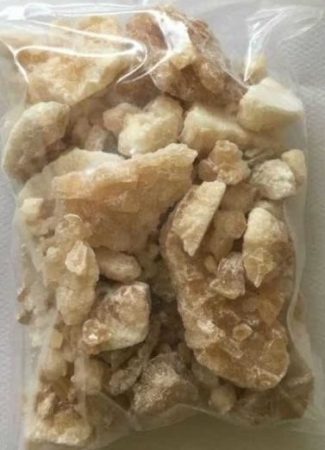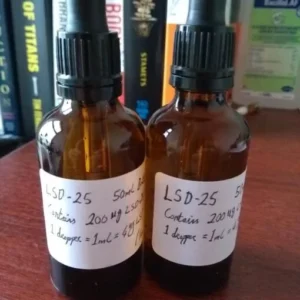Buy MDPV (Methylenedioxypyrovalerone) — Pharmacology, Toxicology & Research Guide
MDPV (methylenedioxypyrovalerone) is a synthetic stimulant of the cathinone family that acts primarily as a norepinephrine–dopamine reuptake inhibitor (NDRI). It has been the subject of forensic, toxicological and preclinical research because of its potent psychostimulant effects and associated health risks. This page is informational only and does not promote or facilitate acquisition or non-clinical use. Buy MDPV
Chemical & physical data
| Attribute | Detail |
|---|---|
| Name | Methylenedioxypyrovalerone (MDPV) |
| Common synonyms | MDPV |
| CAS (reported) | 1239943-76-0 |
| Molecular formula | C₁₆H₂₁NO₃ |
| Molecular weight | 275.34 g·mol⁻¹ |
| Appearance | White to off-white crystalline powder (descriptive) |
| Pharmacology | Norepinephrine–dopamine reuptake inhibitor (NDRI) |
| Typical effect duration (reported) | ~3–4 hours main effects; residual stimulation up to 6–8 hours |
| Storage guidance | Cool, dry, dark conditions; follow institutional chemical handling protocols |
| Intended use of content | Scientific research, toxicology, education — not for human consumption |
Pharmacology & mechanisms (research perspective)
-
Primary action: MDPV potently blocks dopamine and norepinephrine transporters, increasing extracellular monoamine levels.
-
Comparative potency: In animal and in vitro models MDPV is often described as having high potency relative to many classical stimulants.
-
Behavioral effects (research & case reports): locomotor stimulation, increased alertness, euphoria, reduced appetite, and increased cardiovascular activity.
-
Risks shown in literature: agitation, tachycardia, hypertension, insomnia, severe anxiety or psychosis, compulsive re-administration in some cases.
Toxicology & clinical concerns
-
Acute toxic effects: cardiovascular strain (tachycardia, hypertension), hyperthermia, agitation, psychosis and in extreme cases seizures or multi-system complications.
-
Dependence & abuse liability: Preclinical and clinical case reports indicate significant reinforcing properties and high potential for compulsive use.
-
Long-term data: Controlled long-term human safety data are lacking; chronic use is associated with psychiatric and physical harms in case series and forensic reports.
Analytical & laboratory notes
-
Common detection methods: GC–MS, LC–MS/MS and high-resolution MS are used for identification and quantitation in forensic and clinical toxicology.
-
Reference standards: Use authenticated reference materials and certificates of analysis (COA) for method validation.
-
Sample stability: hygroscopic powders may clump — store sealed and desiccated; document storage conditions and lot information.
Safety, handling & ethical research practice | Buy MDPV
-
Not for human consumption. Any human-subject research requires IRB/ethics approval and medical supervision.
-
PPE & containment: Use laboratory gloves, eye protection, lab coat and certified fume hood for weighing and dispensing. Avoid inhalation and skin contact.
-
Waste & disposal: Dispose of residues per institutional hazardous waste procedures.
-
Harm-reduction note for educators: If discussing MDPV in harm-reduction contexts, emphasize acute risk signs, emergency responses, and legal status.
Legal & regulatory considerations | Buy MDPV
-
Varies by jurisdiction: MDPV is controlled or explicitly scheduled in many countries and regions. Researchers must verify local laws, institutional policies, and licensing requirements prior to possession, transport, or study.
-
For research labs: ensure appropriate permits, record keeping, secure storage and compliance with controlled-substance regulations.
Comparative table — MDPV vs related stimulants
| Compound | Class | Primary action | Typical research use |
|---|---|---|---|
| MDPV | Cathinone derivative | Potent NDRI | Behavioral pharmacology, forensic toxicology |
| Cocaine | Tropane alkaloid | DAT/NET blocker, local anesthetic | Clinical, forensic, neuropharmacology |
| Methylphenidate | Piperidine derivative | DAT/NET blocker (less potent than MDPV in some assays) | ADHD models, transporter studies |
| Amphetamine | Phenethylamine | Promotes monoamine release and reuptake inhibition | Neurochemistry, addiction models |
Related Products
Responsible research & recommended readings
-
PubChem — MDPV (compound summary)
-
NCBI / PubMed — search “MDPV toxicology” for peer-reviewed studies.
-
EMCDDA — reports on novel psychoactive substances and surveillance.
-
DEA / national regulators — check scheduling and legal notices in your country. – (USA)
FAQ | Buy MDPV
Q: Is MDPV safe for humans?
A: Safety is not established. Evidence from case reports and preclinical studies indicates high risk of acute toxicity and dependence.
Q: Can MDPV be used medically?
A: MDPV is not approved for medical use. Historical analogs (e.g., pyrovalerone) had limited therapeutic exploration; MDPV itself remains a research/forensic compound.
Q: How should laboratories prepare to study MDPV?
A: Obtain institutional approvals, use validated analytical standards, maintain secure storage, and follow PPE and waste protocols.








Reviews
There are no reviews yet.